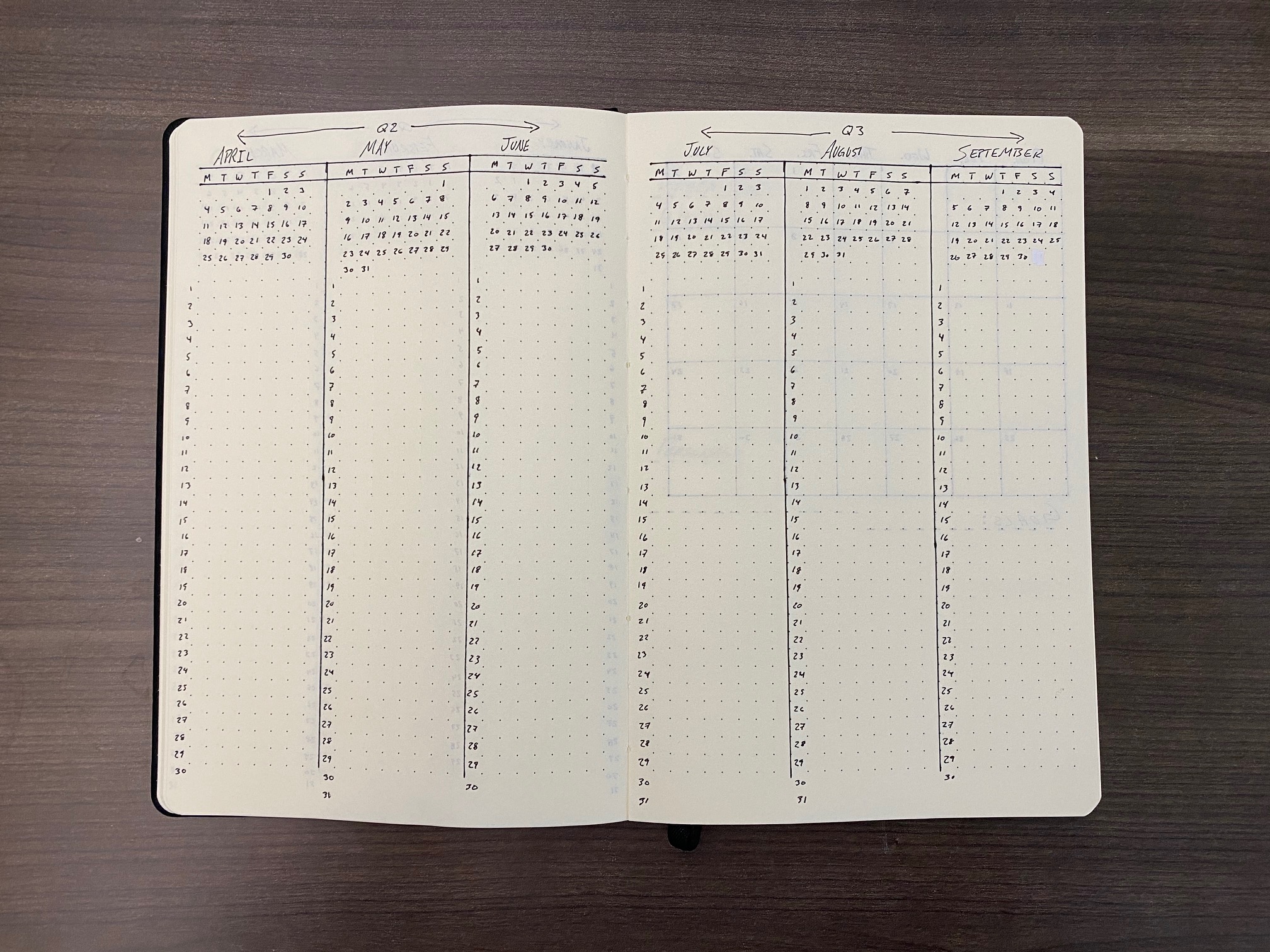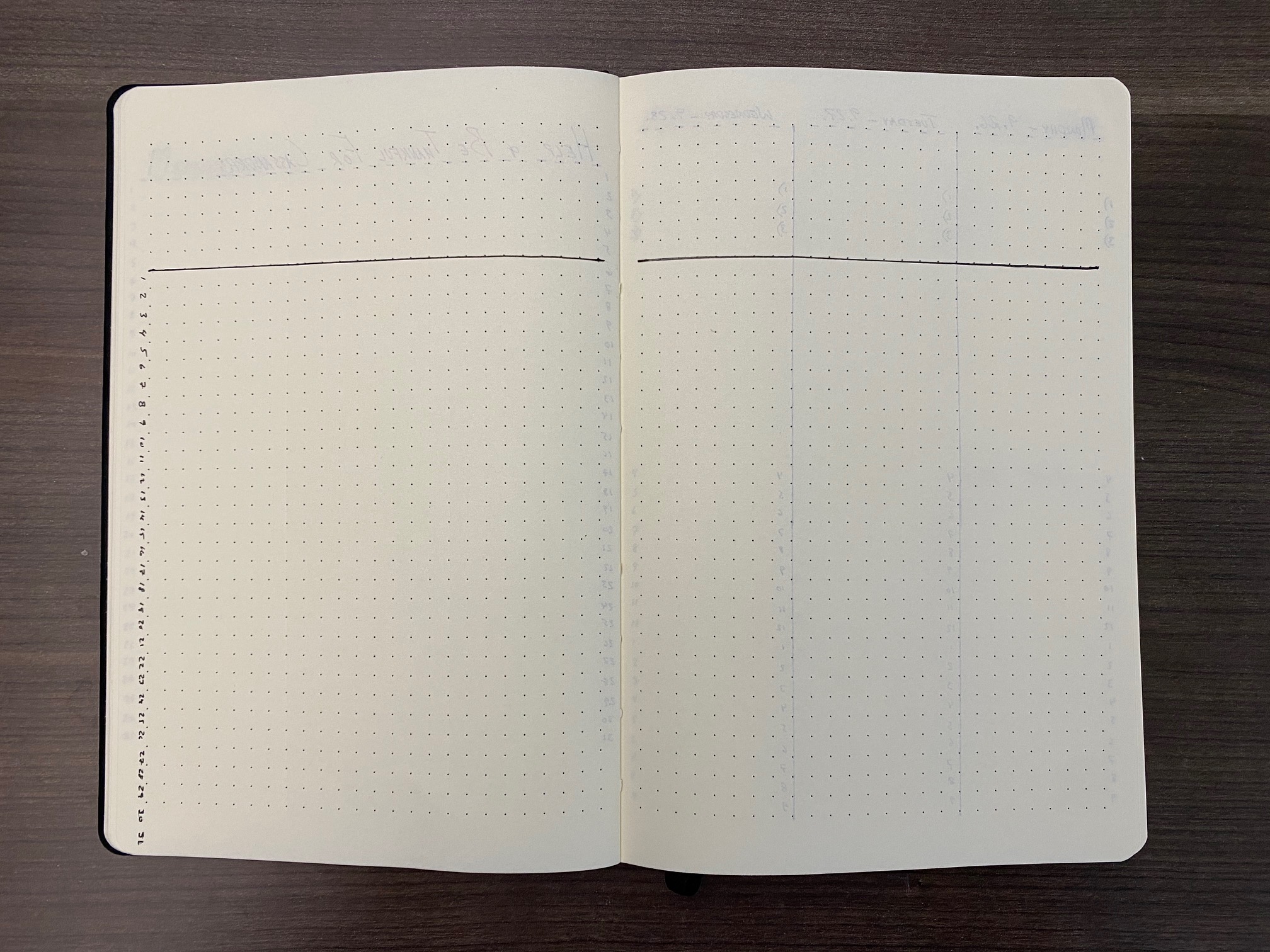Journal For Discipline!
Over the past two years I have kept a daily journal for tracking tasks, notes, and events. For taking notes I follow the Bullet Journal Method. The images to follow display how I have organize my journal. It is what works for me.
Journal Supplies

For my journals I use ones with bullet grid paper. This journal measures five and a half inches in width and eight and a half inches in height. I got this one in a pack of three from Walmart. The brand is simplygenius and it is really cheaply made. I prefer my first two journals, which I also got from Walmart, the Exceed brand. Unfortunatly, last I checked they had stopped selling this higher quality journal and instead have opted for the super cheap made in China, simplygenius journals.
Normally I would not care about the specific type of pen I used, but the paper in this journal is so bad that I had to experiment to find a pen that would actually write on this terrible paper. The ultra fine Pilot G-2 (0.38) does the job. Additionally, I always try to have some White-Out tape handy for my frequent mistakes.
Journal Organization
The first two full page spreads in my Journal are reserved for a quick full year at a glance. I divide each page into thirds (or quarters). Each third contains a full calendar for that specific month followed by space to schedule events by day.


At the begining of each month I reserve several pages to be devoted to that month. That includes a page for that months calendar along with the following sections:
- Full months calendar
- Goals for the month
- Brain Dump section
- Brain dump for work
- Brain dump for my personal life

- Check-In section
- Check-In for my physical state
- Check-In for my spiritual state
- Daily gratitude tracker

- Daily memory tracker
- Additional tracker for something I'm trying to be intentional about

- Daily habit tracker

After completing the month at a glance and its cooresponding sections I leave a full page spread for my week at a glance. This is where I break the spread into columns with each week day getting a full column and the last column being split between the weekend. The daily columns include the following: a section for top priorities, space for notes, and lastly a section that breaks down my waking hours for that day to schedule events.

Each day is where the meat of the journaling takes place, but first I reserve a page at the begining of each working week for a Weekly To-Do List. This is where I list out tasks that I want to accomplish throughout the week. I typically start to fill this section out towards the end of the work week as I begin to think ahead to what needs to be done over the weekend.
The day of the week is pretty self explainatory. I include the following sections you see below: The date, the top priorities for the day, and a section to the right for scheduled events by hour for the day. While I am often lazy about the monthly sections in my journaling I am very disciplined about my daily tasks. I fill this section out first thing every morning and it allows me to think through what all needs to be accomplished for the day. As the day progresses I fill this page out and often carry on to the next page.

As priviously noted above, this type of journaling and layout is what works for me. If you are serious about journaling I suggest you take the time to research what works for other people and build out your own methodology. My only suggestion is to not over think it, just start journaling!
If you found this article interesting and would like to share a comment with me, please feel free to reach out to me directly via my personal email at (drew@drewredifer.com).
Return to